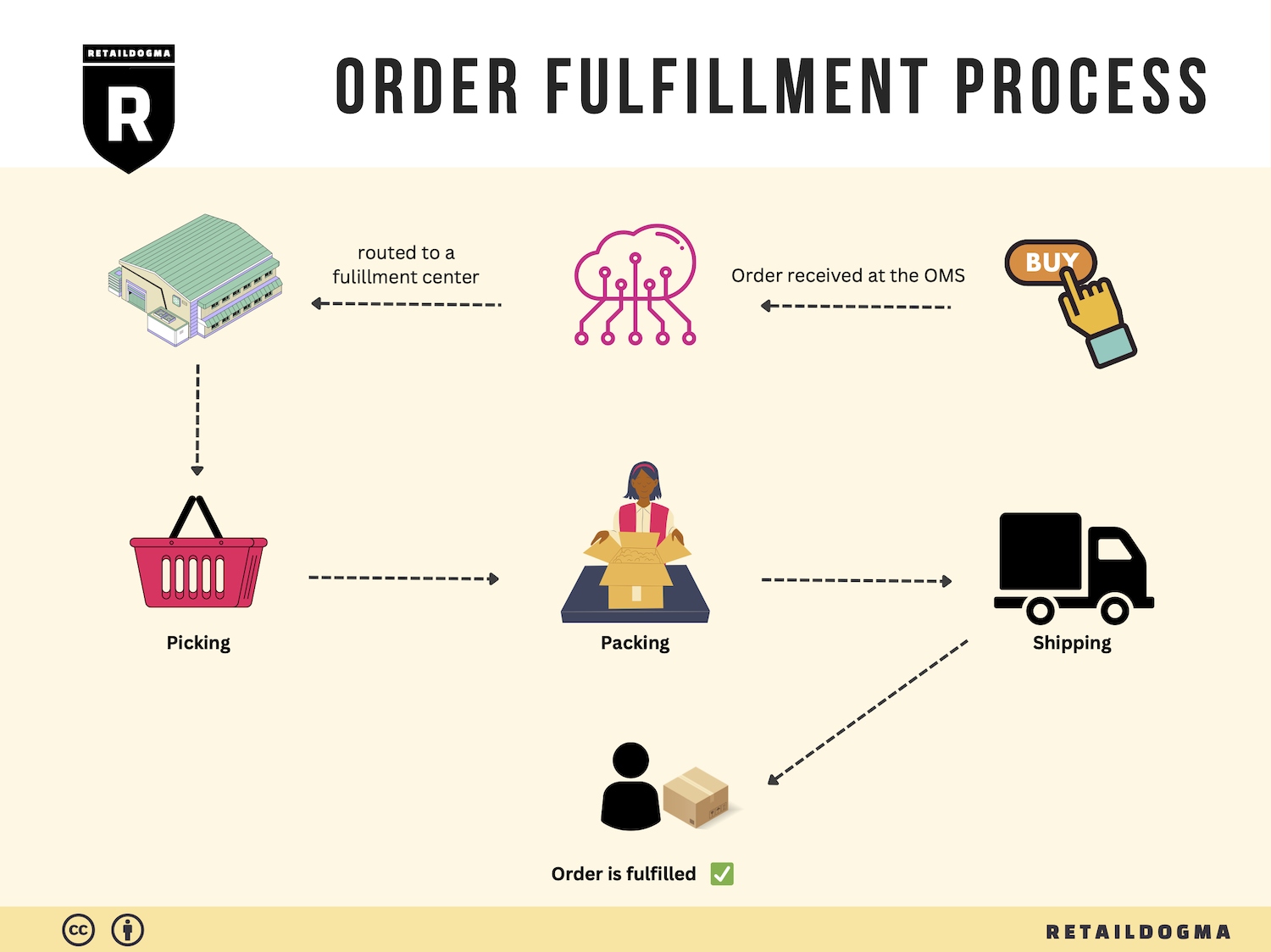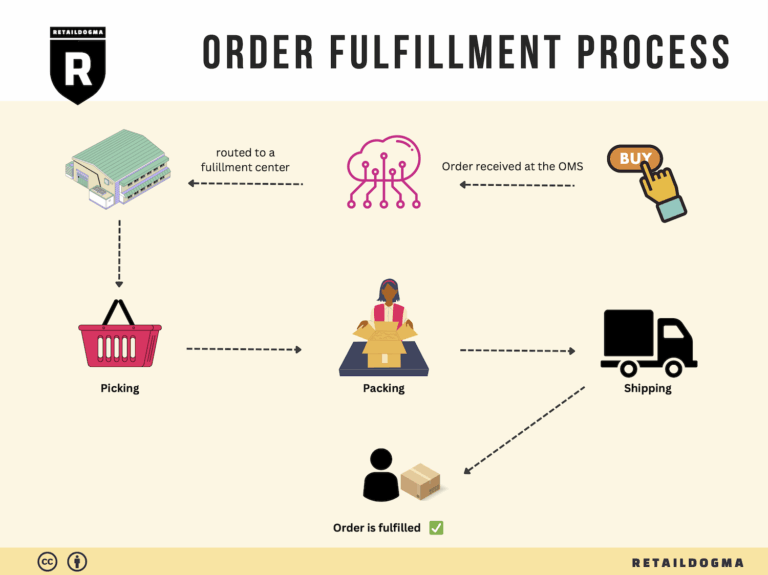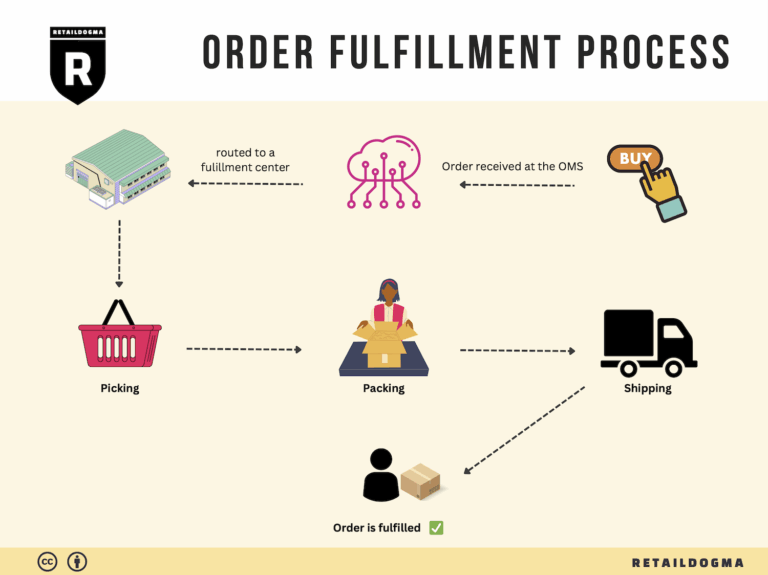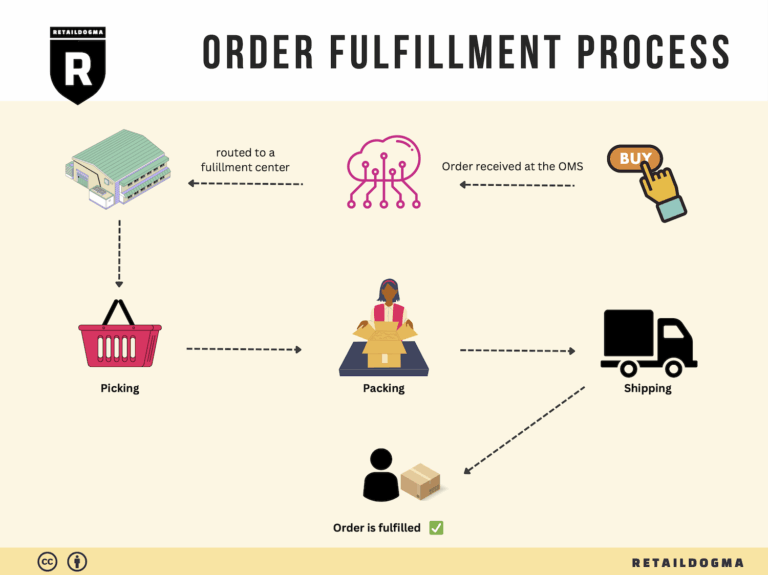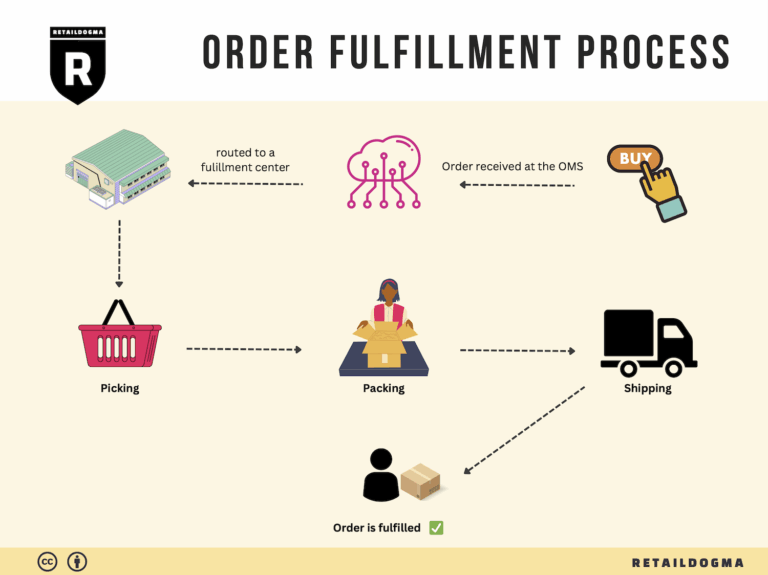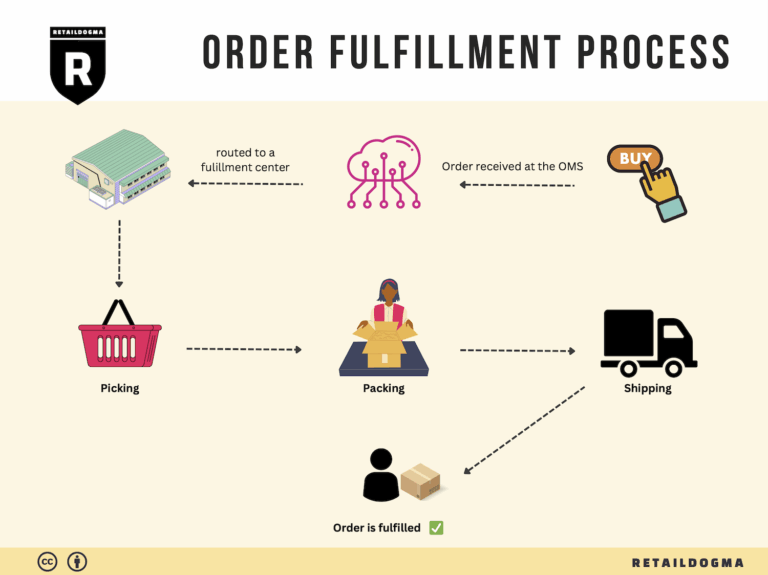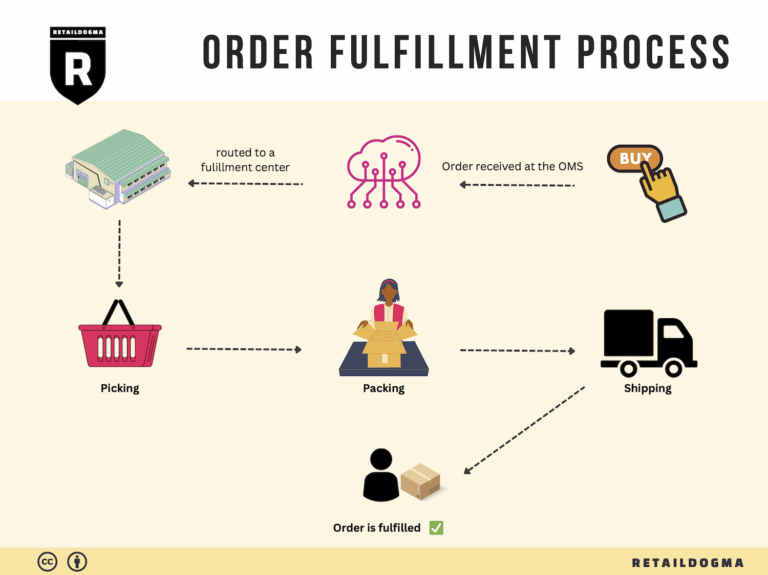Ecommerce Fulfillment Services: The Ultimate Guide (2025)
What is E-commerce Fulfillment? An Introduction for Growing Businesses
Understanding E-commerce Fulfillment: A Key to Scaling Your Business
As an e-commerce business owner, you may find yourself drowning in the complexities of packing and shipping orders. The exhilaration of growing sales can quickly turn into a logistical nightmare, leaving you overwhelmed with the sheer volume of orders to process. This is where effective e-commerce fulfillment comes into play. At its core, fulfillment is the process of getting a product from your inventory to your customer’s doorstep, ensuring a seamless experience that can significantly impact customer satisfaction and retention.
In this guide, we will demystify e-commerce fulfillment by exploring the various models available to businesses today, including Third-Party Logistics (3PL) and Fulfillment by Amazon (FBA). Each model offers unique advantages and can be tailored to fit the specific needs of your business, whether you are a small startup or an established enterprise.
Key Components of Fulfillment
We will also delve into the core services that fulfillment providers typically offer. From warehousing and inventory management to order processing, packing, and shipping, understanding these components will help you identify what you need from a fulfillment partner.
Choosing the right fulfillment partner is crucial for your business’s success. We will outline key considerations, such as service level agreements, technology integration, scalability options, and customer service support. Making an informed choice can save you time and money, allowing you to focus on growing your business instead of getting bogged down by logistical challenges.
Navigating Pricing Structures
Pricing is another critical aspect we will address. E-commerce fulfillment can vary widely in cost depending on the services you select and the provider you choose. We’ll break down typical pricing models, including per-order fees, storage costs, and shipping rates, to help you budget effectively and avoid unexpected expenses.
Empowering Your Business Decisions
Ultimately, the goal of this guide is to empower you to make informed decisions about your e-commerce logistics. By understanding the fulfillment landscape, you can optimize your operations, improve customer satisfaction, and scale your business with confidence. Whether you’re just starting or looking to streamline your existing processes, this comprehensive overview will equip you with the knowledge you need to succeed in the competitive world of e-commerce.
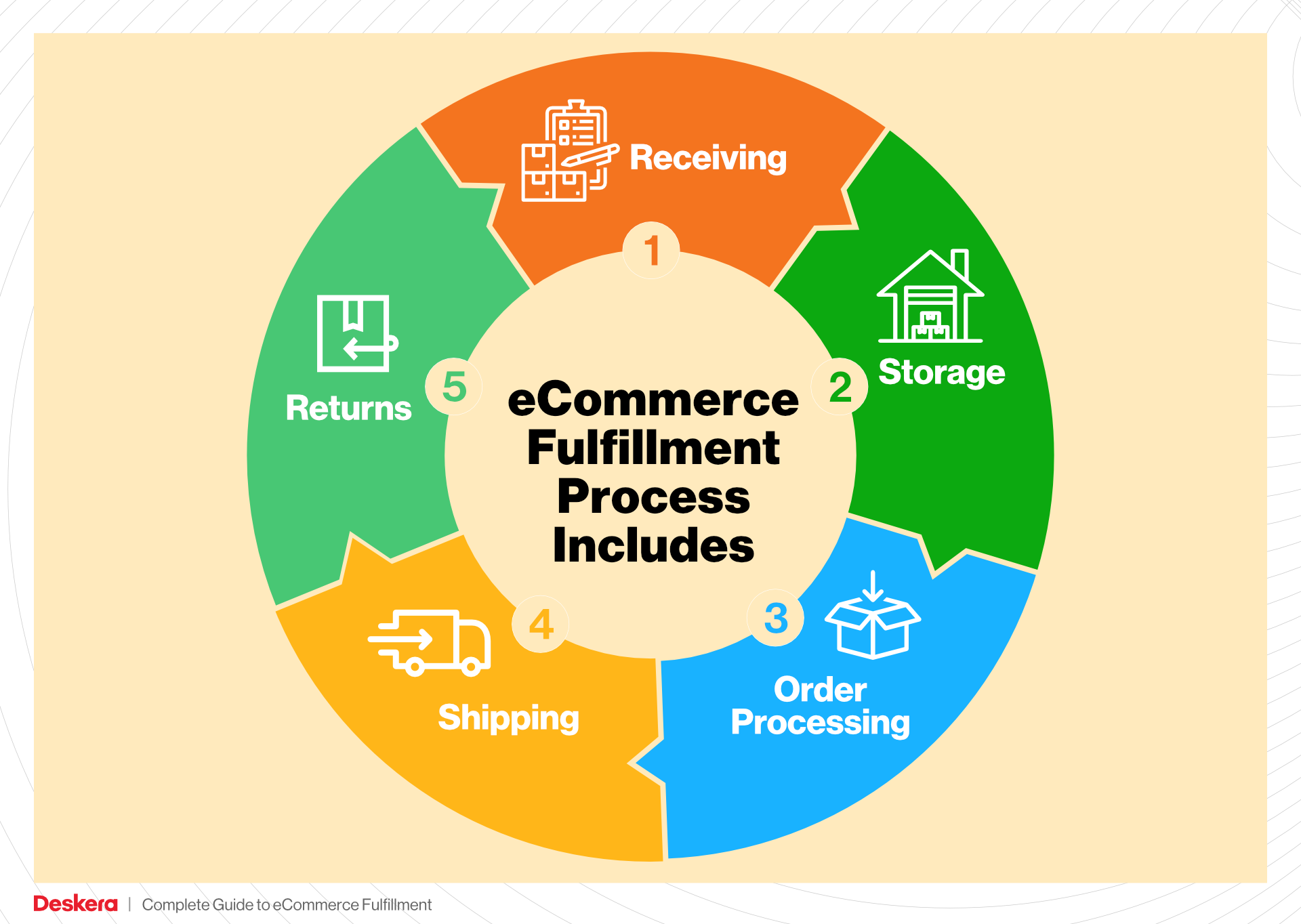
What You’ll Learn In This Guide
- What is E-commerce Fulfillment? An Introduction for Growing Businesses
- The Order Fulfillment Process: From ‘Buy’ Button to Customer’s Door
- Comparing Fulfillment Models: In-House vs. 3PL vs. Dropshipping
- A Deep Dive into Amazon FBA: Pros, Cons, and Who It’s For
- Core Services Offered by Fulfillment Centers
- How to Choose a Fulfillment Partner: A 6-Point Checklist
- Understanding Fulfillment Pricing: A Breakdown of Common Fees
- Frequently Asked Questions (FAQs) about Fulfillment
- Conclusion: Is Outsourcing Fulfillment the Right Move for Your Business?
- Important Disclaimer
The Order Fulfillment Process: From ‘Buy’ Button to Customer’s Door
1. Receiving Inventory
The order fulfillment process begins with the receiving of inventory. This critical step involves accepting goods from suppliers and ensuring that they match the purchase order specifications. Upon arrival at the fulfillment center, items are checked against shipping documents to confirm their quantity and condition.
Importance: This step is essential for maintaining accurate inventory levels and ensuring that the products available for sale are in good condition. Any discrepancies, such as damaged goods or incorrect quantities, can lead to stockouts or customer dissatisfaction.
Key Term: SKU (Stock Keeping Unit) – Each product is assigned a unique SKU that helps in tracking inventory. Properly labeling and recording SKUs during the receiving process is vital for efficient management of stock.
2. Warehouse Storage
Once inventory is received and verified, it is organized and stored in the warehouse. This involves placing products in designated storage locations, which can vary from shelves to bins based on the type of item and its size. Effective warehouse layout and management systems are crucial in this stage.
Importance: Proper storage not only maximizes space but also facilitates easier access to products when orders are placed. An organized warehouse reduces the time spent locating items, leading to faster order processing.
Key Term: ABC Analysis – This inventory categorization technique classifies products into three categories (A, B, and C) based on their importance, allowing businesses to prioritize management efforts for high-value items.
3. Order Picking
When a customer places an order, the next step is order picking. This process involves retrieving the items from their storage locations based on the order details. Pickers utilize pick lists, which are generated by the order management system, to locate and collect the required products efficiently.
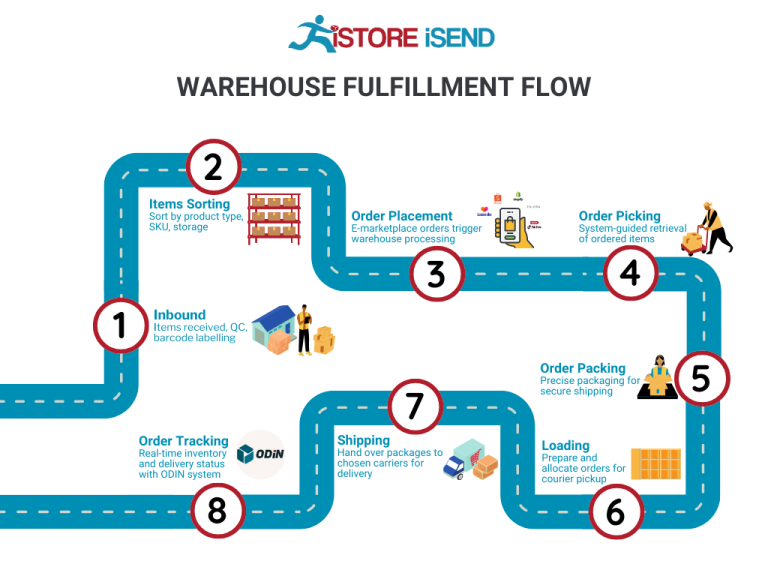
Importance: Efficient picking is crucial for ensuring that orders are filled accurately and quickly. Any mistakes at this stage can lead to incorrect shipments, increasing return rates and customer dissatisfaction.
Key Term: Pick Lists – These documents outline the items and quantities to be picked for each order, serving as a guide for pickers and ensuring accuracy in order fulfillment.
4. Order Packing
After items are picked, they proceed to the packing station. Here, the products are carefully packed to ensure they are protected during transit. This involves selecting the appropriate packaging materials, such as boxes, bubble wrap, and packing peanuts, and labeling the package for shipment.
Importance: Packing is a vital step that directly affects customer satisfaction. Properly packed items are less likely to be damaged in transit, which reduces returns and enhances the overall customer experience.
Key Term: Packing Slip – This document accompanies the package and details the items included in the shipment. It serves as a receipt for the customer and helps in verifying that the correct items have been sent.
5. Shipping & Delivery
The final step in the order fulfillment process is shipping and delivery. Once the order is packed, it is handed over to a carrier for delivery to the customer. This process involves selecting the best shipping method based on factors such as cost, speed, and destination.
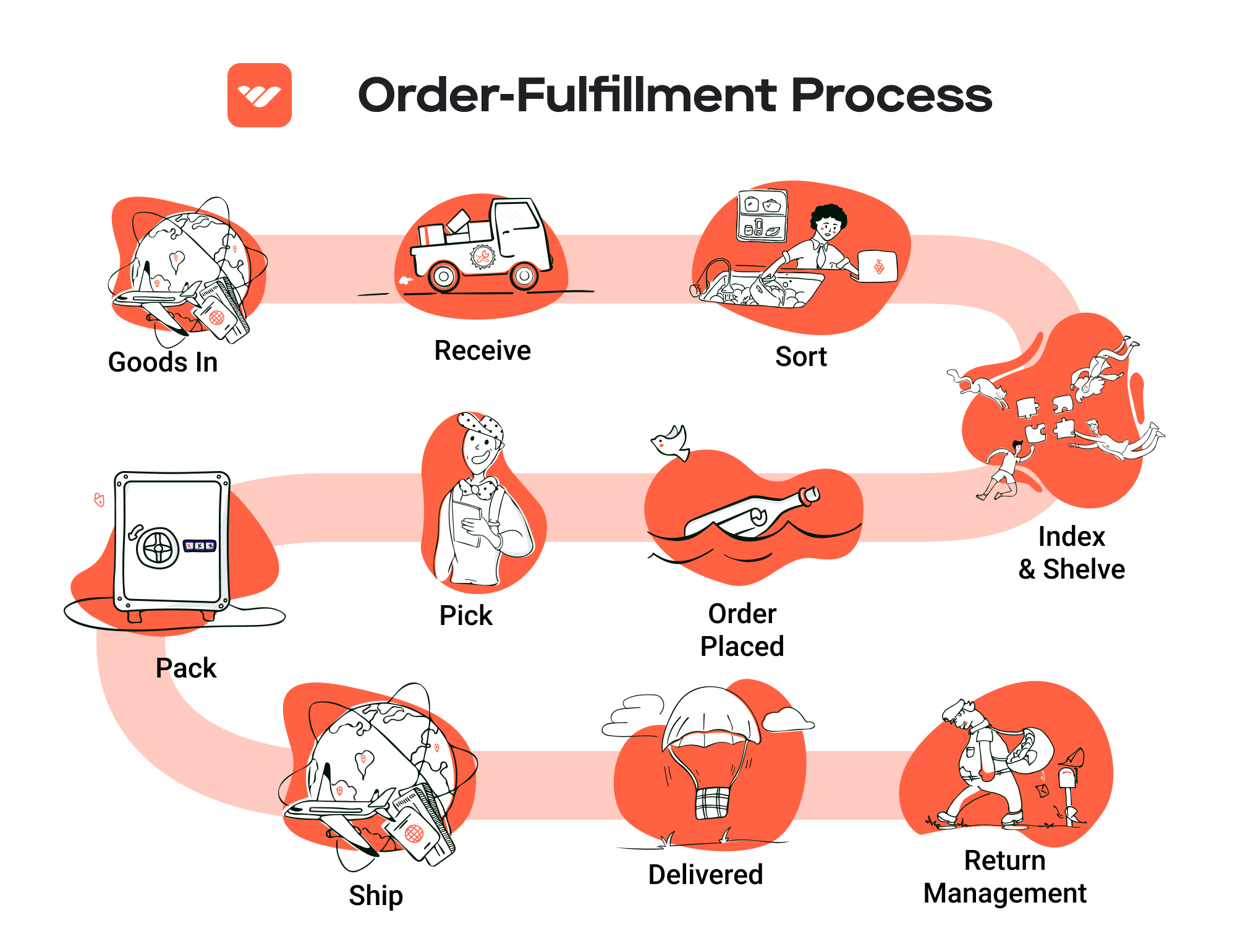
Importance: Timely and accurate delivery is critical for customer satisfaction. Efficient shipping processes can enhance the reputation of your business and encourage repeat purchases.
Key Term: Last-Mile Delivery – This term refers to the final step of the delivery process, where the package is transported from a distribution center to the end customer. Optimizing last-mile delivery can significantly improve overall fulfillment efficiency and customer satisfaction.
In summary, understanding and optimizing each step of the order fulfillment process is essential for e-commerce businesses looking to scale. By focusing on efficient inventory management, effective storage solutions, accurate picking, careful packing, and reliable shipping, businesses can enhance their operational efficiency and improve customer satisfaction.
Comparing Fulfillment Models: In-House vs. 3PL vs. Dropshipping
Fulfillment Model Comparison
| Model | Who Handles Inventory | Best For (Business Stage) | Key Advantage | Key Disadvantage |
|---|---|---|---|---|
| In-House Fulfillment | The business itself | Established businesses with sufficient volume | Full control over inventory and processes | High operational costs and complexity |
| Third-Party Logistics (3PL) | An external logistics provider | Growing businesses looking to scale | Flexibility and scalability | Less control over inventory and processes |
| Dropshipping | Supplier or manufacturer | Startups and small businesses | Low upfront investment | Lower profit margins and potential quality issues |
In-House Fulfillment
In-house fulfillment involves managing the entire logistics process within your own organization. This model is often preferred by established businesses that have reached a level of sales volume that justifies the investment in warehouse space, staff, and technology. With in-house fulfillment, a business retains complete control over its inventory, order processing, and shipping. This can lead to enhanced customer satisfaction due to the ability to customize packaging and shipping options, as well as quicker response times for order fulfillment.
However, this model comes with significant challenges. The operational costs associated with maintaining a warehouse, hiring staff, and investing in technology can be substantial. Furthermore, managing inventory can become complex, especially as the business scales and product lines expand. Companies may also face challenges in handling peak seasons or unexpected demand spikes, which can result in delays and lost sales opportunities.
Third-Party Logistics (3PL)
Third-party logistics (3PL) providers offer a flexible and scalable solution for businesses looking to outsource their fulfillment operations. In this model, an external logistics company manages the storage, inventory, and shipping processes on behalf of the business. This is ideal for growing companies that need to scale quickly without the overhead costs associated with maintaining their own warehouse.
One of the key advantages of using a 3PL is the ability to leverage the provider’s expertise and technology. Many 3PLs offer advanced inventory management systems, order tracking, and shipping solutions that can enhance efficiency and reduce errors. Additionally, they can provide access to a wider range of shipping options, potentially lowering costs and improving delivery times.
However, businesses using 3PL services may experience a loss of control over their inventory and fulfillment processes. This can lead to challenges in quality assurance and consistency, particularly if the 3PL provider does not align with the company’s standards. Furthermore, as businesses grow, they may find that the fees associated with 3PL services can add up, impacting overall profitability.
Dropshipping
Dropshipping is a fulfillment model where the retailer does not hold any inventory. Instead, when a customer places an order, the retailer purchases the item from a third-party supplier, who then ships it directly to the customer. This model is particularly attractive for startups and small businesses that want to minimize upfront investment in inventory.
The primary advantage of dropshipping is the low barrier to entry. Entrepreneurs can start selling products without the need to invest heavily in inventory or warehousing. This makes it an appealing option for testing new products or markets. Additionally, the dropshipping model allows for a wide product selection without the risks associated with unsold inventory.
However, dropshipping also has significant drawbacks. Profit margins are often lower compared to other fulfillment models since retailers typically pay a wholesale price to the supplier. Quality control can be a challenge, as the retailer has no direct oversight of the products being shipped. This can lead to inconsistent customer experiences and potential damage to brand reputation. Moreover, reliance on suppliers for inventory management can result in stockouts or delays, which can negatively affect customer satisfaction.
Conclusion
Choosing the right fulfillment model is crucial for the success of your e-commerce business. Each model has its distinct advantages and challenges, and the best choice will depend on your business stage, resources, and long-term goals. In-house fulfillment offers control but requires significant investment, while 3PL provides scalability and expertise at the cost of some control. Dropshipping is low-risk and accessible for startups, but it may present challenges in profitability and quality. Understanding these differences can help you make informed decisions that align with your business strategy and growth aspirations.
A Deep Dive into Amazon FBA: Pros, Cons, and Who It’s For
Understanding Fulfillment by Amazon (FBA)
Fulfillment by Amazon (FBA) is a service offered by Amazon that allows e-commerce businesses to store their products in Amazon’s fulfillment centers. Amazon takes care of storage, packaging, and shipping, handling customer service and returns on behalf of the sellers. This service is particularly appealing to e-commerce business owners looking to scale their operations without the complexities of managing logistics and supply chains.
How FBA Works
-
Setup: Sellers create an Amazon Seller Account and register for FBA. They can then list their products on Amazon and choose the items they want to fulfill through FBA.
-
Inventory Shipment: Sellers ship their products to Amazon’s fulfillment centers. Amazon provides guidelines on how to prepare and label products to ensure they are ready for storage.
-
Storage: Once the products arrive at the fulfillment center, they are stored until sold. Amazon uses advanced inventory management systems to keep track of stock levels.
-
Order Processing: When a customer places an order, Amazon picks, packs, and ships the product directly to the customer. This process is usually expedited for Prime members, offering faster delivery options.
-
Customer Service and Returns: Amazon manages all customer inquiries related to FBA products, including returns and refunds, which simplifies the seller’s operational burden.
-
Sales Reporting: Sellers can access comprehensive reports on sales, inventory levels, and customer feedback through their Amazon Seller account, allowing for informed decision-making.
Pros of Using Amazon FBA
-
Prime Eligibility: One of the most significant advantages of FBA is the ability for sellers’ products to be eligible for Amazon Prime. This means that Prime members can enjoy free two-day shipping, significantly increasing the visibility and attractiveness of products.
-
Customer Trust: Amazon is a trusted platform, and customers often feel more secure purchasing products that are fulfilled by Amazon. This trust can lead to higher conversion rates and customer loyalty.
-
Multi-Channel Fulfillment: FBA allows sellers to fulfill orders not only from Amazon but also from other sales channels, such as their own e-commerce websites or other marketplaces. This flexibility can streamline logistics and inventory management.
-
Scalability: With FBA, sellers can scale their businesses without the need to invest heavily in warehousing and logistics infrastructure. This is particularly beneficial for small to medium-sized enterprises that may not have the resources to handle fulfillment internally.
-
Time Savings: Outsourcing fulfillment to Amazon frees up time for sellers to focus on other critical aspects of their business, such as marketing, product development, and customer engagement.
Cons of Using Amazon FBA
-
High Fees: While FBA simplifies logistics, it comes with costs. Sellers incur storage fees based on the amount of inventory stored, as well as fulfillment fees for each order processed. These costs can add up, especially for low-margin products.
-
Strict Inventory Rules: Amazon has stringent inventory management policies, including guidelines on how products should be packaged and labeled. Non-compliance can lead to additional charges or even removal of inventory.
-
Commingling Risks: FBA uses a commingling inventory model, meaning that sellers’ products may be stored alongside products from other sellers. If a customer receives a defective product, it can lead to negative reviews for the seller, even if the issue originated from another seller’s inventory.
-
Loss of Control: By relying on Amazon for fulfillment, sellers may feel a loss of control over the customer experience, including packaging and shipping times. Any delays on Amazon’s end can impact seller ratings.
-
Dependence on Amazon: Utilizing FBA can create a dependency on Amazon’s platform for sales and fulfillment. Changes in Amazon’s policies or fee structures can significantly affect a seller’s profitability.
Who is FBA Best For?
Fulfillment by Amazon is particularly advantageous for:
-
New Sellers: Entrepreneurs looking to launch their products without the overhead of managing logistics may find FBA an appealing option. It allows them to tap into Amazon’s vast customer base while focusing on growing their brand.
-
Small to Medium Businesses: Businesses that may lack the resources or infrastructure for in-house fulfillment can benefit from FBA’s scalability and efficiency, enabling them to compete with larger players.
-
Seasonal Sellers: For those who experience seasonal spikes in demand, FBA provides the flexibility to scale inventory up or down without the commitment of long-term warehousing.
-
Brands Seeking Exposure: Companies looking to enhance their visibility and credibility can leverage Amazon’s platform and customer trust through FBA, especially if they are new to the e-commerce landscape.
In conclusion, while Amazon FBA offers numerous advantages in terms of efficiency, customer trust, and scalability, it also comes with challenges such as high fees and a loss of control over the fulfillment process. Businesses considering FBA should carefully evaluate their product margins, inventory management capabilities, and long-term growth strategies to determine if this service aligns with their operational goals.
Core Services Offered by Fulfillment Centers
Inventory Management & Warehousing
Fulfillment centers provide comprehensive inventory management and warehousing services designed to streamline the storage and organization of products. This service includes tracking inventory levels, managing stock replenishments, and ensuring that products are stored in an optimal manner to maximize space and accessibility.
Benefits:
1. Real-time Inventory Tracking: Advanced inventory management systems allow e-commerce businesses to monitor stock levels in real-time, reducing the risk of stockouts or overstock situations. This capability helps businesses maintain the right amount of inventory to meet customer demand without incurring excess carrying costs.
-
Space Optimization: Fulfillment centers utilize sophisticated warehousing techniques, such as slotting and zone picking, to ensure that products are stored efficiently. This optimization leads to quicker retrieval times during order fulfillment, ultimately enhancing customer satisfaction through faster shipping times.
-
Scalability: As businesses grow, their inventory needs can change dramatically. Fulfillment centers offer scalable warehousing solutions that can accommodate fluctuations in inventory levels without the need for businesses to invest in additional storage space or resources.
-
Cost Efficiency: Outsourcing warehousing to a fulfillment center can significantly reduce overhead costs associated with managing a warehouse, including rent, utilities, and staffing. This allows businesses to focus their resources on core operations such as marketing and product development.
Pick and Pack Services
Pick and pack services are essential components of the order fulfillment process. This service involves selecting products from the warehouse based on customer orders (picking) and then packaging those products for shipment (packing).
Benefits:
1. Increased Accuracy: Fulfillment centers employ advanced technology and trained staff to ensure high accuracy in order picking. This reduces the likelihood of errors, such as sending the wrong item to customers, which can damage a business’s reputation and lead to costly returns.
-
Efficient Order Processing: By leveraging automation and streamlined workflows, fulfillment centers can process orders rapidly. This efficiency allows businesses to promise faster shipping times, which is increasingly important in today’s e-commerce landscape where consumers expect quick delivery.
-
Custom Packaging Solutions: Fulfillment centers often offer customizable packaging options to enhance branding and customer experience. Whether it’s branded boxes, eco-friendly materials, or special inserts, businesses can create a unique unboxing experience that resonates with customers.
-
Reduced Labor Costs: Outsourcing pick and pack services to a fulfillment center allows businesses to eliminate the need for in-house labor dedicated to order fulfillment. This can lead to significant savings on labor costs while allowing the business to allocate resources more effectively.
Kitting and Assembly
Kitting and assembly services involve combining multiple products into a single package or kit, which can be particularly useful for promotional bundles or product sets. This service may also include assembling products that require some level of construction before they can be sold.
Benefits:
1. Enhanced Product Offerings: Kitting allows businesses to create unique product bundles that can attract more customers. These bundles can increase average order value and drive sales by providing customers with more perceived value.
-
Time Savings: By outsourcing kitting and assembly to a fulfillment center, businesses can save significant time. This allows them to focus on strategic initiatives such as marketing and customer engagement rather than labor-intensive assembly tasks.
-
Consistency and Quality Control: Fulfillment centers typically have established processes for kitting and assembly, which helps ensure that products are consistently prepared to high-quality standards. This consistency enhances customer satisfaction and minimizes returns due to assembly errors.
-
Flexibility for Seasonal Promotions: During peak seasons or promotional periods, businesses may want to offer special kits or bundles. Fulfillment centers can quickly adapt to these changes, allowing businesses to respond to market demands without straining their internal resources.
Returns Management (Reverse Logistics)
Returns management, often referred to as reverse logistics, is a crucial service offered by fulfillment centers that focuses on handling product returns efficiently. This process includes receiving returned items, inspecting them, restocking them if possible, or managing the disposal of damaged goods.
Benefits:
1. Streamlined Returns Process: Fulfillment centers implement streamlined processes for handling returns, which can significantly reduce the time and effort required to manage this often complex aspect of e-commerce. A smooth returns process enhances customer satisfaction and can lead to repeat business.
-
Data Insights: By analyzing return data, fulfillment centers can provide valuable insights into product performance, customer preferences, and potential issues with specific items. This information can help businesses make informed decisions about inventory management, product development, and marketing strategies.
-
Cost Reduction: Efficient returns management can help minimize costs associated with handling returns, including shipping and restocking fees. By effectively managing this process, businesses can reduce the financial impact of returns on their bottom line.
-
Improved Customer Loyalty: A hassle-free returns experience can significantly improve customer loyalty. When customers know they can return products easily, they are more likely to make purchases and recommend the business to others.
By leveraging these core services offered by fulfillment centers, e-commerce businesses can enhance their operational efficiency, improve customer satisfaction, and ultimately drive growth in a competitive marketplace.
How to Choose a Fulfillment Partner: A 6-Point Checklist
Location & Warehouse Network
Importance: The geographic location of your fulfillment partner is crucial for optimizing shipping times and costs. A partner located near your primary customer base can significantly reduce shipping delays and expenses.
Questions to Ask:
– Where are your warehouses located, and how many do you operate?
– How does your warehouse network support my target markets?
– Can you provide shipping times and costs for various regions?
– Do you have facilities that can handle seasonal fluctuations in demand?
Technology & Integrations
Importance: An effective fulfillment partner should leverage technology to streamline operations and integrate seamlessly with your existing e-commerce platforms. This ensures real-time inventory management, order tracking, and data sharing.
Questions to Ask:
– What technology platforms do you use for inventory management and order processing?
– Can your system integrate with my e-commerce platform (e.g., Shopify, Magento, Amazon)?
– How do you handle order tracking and updates for customers?
– Do you offer APIs for custom integrations or reporting?
Specializations (e.g., Cold Storage, Oversized Items)
Importance: Depending on your product line, it may be necessary to partner with a fulfillment center that specializes in certain types of inventory, such as perishable goods requiring cold storage or oversized items that require special handling.
Questions to Ask:
– Do you have experience handling my specific product types?
– What special equipment or facilities do you have for temperature-sensitive or oversized items?
– Can you accommodate unique packaging or shipping requirements?
– What are your protocols for managing inventory with specific handling needs?
Scalability & Capacity
Importance: As your business grows, your fulfillment needs will evolve. It’s vital to choose a partner that can scale alongside your operations, whether through increased order volume or expanded service offerings.
Questions to Ask:
– How do you accommodate businesses experiencing rapid growth?
– What is your capacity for handling peak seasons or unexpected demand spikes?
– Can you provide case studies or examples of how you’ve supported other businesses in scaling?
– What options do you offer for expanding services or locations as my business grows?
Pricing and Contracts
Importance: Understanding the pricing structure and contract terms is essential to ensure that you’re making a financially sound decision. Transparency in pricing helps you avoid hidden fees and budget accurately.
Questions to Ask:
– What is your pricing model (e.g., per order, per pallet, monthly fees)?
– Are there any additional fees for services such as returns, storage, or custom packaging?
– What are the contract terms, and how flexible are they if my needs change?
– Can you provide a detailed breakdown of all potential costs?
Customer Support & Reviews
Importance: Exceptional customer support can make a significant difference in your fulfillment operations. You want a partner who is responsive and proactive in addressing issues that arise.
Questions to Ask:
– What customer support options do you offer (e.g., phone, email, live chat)?
– What are your support hours, and how quickly do you typically respond to inquiries?
– Can you provide references or reviews from current or past clients?
– How do you handle order errors or fulfillment issues, and what is your resolution process?
Conclusion
Selecting the right fulfillment partner is a critical decision that can impact your e-commerce business’s efficiency, customer satisfaction, and overall success. By using this checklist, you can ensure that you evaluate potential partners thoroughly, aligning their capabilities with your business needs for optimal growth and performance. As you navigate this process, prioritize transparency and open communication to establish a long-lasting and fruitful partnership.
Understanding Fulfillment Pricing: A Breakdown of Common Fees
Initial Setup Fees
When partnering with an Amazon Fulfillment Center, new e-commerce businesses often encounter initial setup fees. These costs can vary based on the complexity of your operations and the services provided. Initial setup fees typically cover the integration of your e-commerce platform with the fulfillment center’s systems, inventory onboarding, and configuration of your shipping preferences.
The calculation for these fees generally considers the number of SKUs you have, the volume of inventory you plan to send, and any specific customization or unique requirements you may need for your fulfillment process. Businesses should inquire about any one-time fees associated with the integration of technology platforms, as these can add to the overall setup cost.
Receiving Fees
Receiving fees are incurred when your inventory arrives at the fulfillment center. These fees cover the costs associated with unloading, inspecting, and storing your products. Typically, the receiving fee is calculated based on the number of units or pallets received and can also be influenced by the size and weight of the items.
For instance, larger items may attract higher receiving fees due to the additional handling required. To manage these costs effectively, it’s prudent to consolidate shipments and ensure that your products are well-packaged to minimize damage during transport, which could otherwise lead to additional inspection fees.
Storage Fees (per pallet/bin)
Storage fees are charged for the space your products occupy within the fulfillment center. These fees are typically calculated on a per-pallet or per-bin basis and can vary based on the size of the items stored. Most fulfillment centers have a tiered pricing structure, where the cost per pallet decreases with higher volumes of inventory.
It’s essential to consider the duration your products will remain in storage, as many fulfillment centers charge monthly storage fees. To optimize storage costs, regularly analyze your inventory turnover rates and adjust your stock levels accordingly. Additionally, consider using seasonal promotions to move slow-moving inventory, thereby minimizing prolonged storage fees.
Pick & Pack Fees (per item/order)
Pick & pack fees are charged for the labor involved in retrieving items from storage and packaging them for shipment to customers. These fees are typically calculated on a per-item or per-order basis, depending on how many items are included in each order. The more complex the order (for example, if it includes multiple SKUs), the higher the pick and pack fee may be.
To reduce these costs, consider optimizing your product listings to encourage bulk purchases, which can decrease the number of individual orders processed. Additionally, maintaining accurate inventory levels can help streamline the picking process, ultimately reducing the time spent on fulfillment.
Shipping Fees
Shipping fees are one of the most significant expenses in the fulfillment process. These costs cover the transportation of goods from the fulfillment center to the end customer. Shipping fees are generally determined by several factors, including the weight and dimensions of the package, the shipping method selected (standard, expedited, etc.), and the destination.
To manage shipping costs, businesses should evaluate various shipping options and negotiate rates with carriers when possible. Additionally, utilizing Amazon’s shipping network can often yield better rates due to their volume discounts. Offering customers different shipping choices can also help you balance customer satisfaction with cost-effectiveness.
Tips for Getting an Accurate Quote
To obtain an accurate quote for fulfillment services, consider the following strategies:
-
Provide Detailed Information: Share comprehensive details about your product range, including dimensions, weight, and inventory turnover rates. This information will allow fulfillment centers to provide precise pricing.
-
Understand Your Needs: Clearly outline your specific fulfillment requirements, including expected order volumes, peak seasons, and any unique handling needs.
-
Request Custom Quotes: Don’t hesitate to ask for tailored pricing based on your business model. Many fulfillment centers offer flexible pricing structures that can accommodate different types of businesses.
-
Compare Multiple Providers: Engage with several fulfillment centers to compare quotes and services. Look beyond pricing to consider the quality of service, technology integration, and additional support they provide.
-
Review Contract Terms: Carefully review any contracts or agreements to understand all potential fees involved, including hidden costs that may arise after initial setup.
By following these guidelines, you can better navigate the complexities of fulfillment pricing, ensuring your business scales efficiently while managing costs effectively.
Frequently Asked Questions (FAQs) about Fulfillment
1. What is an Amazon Fulfillment Center?
An Amazon Fulfillment Center is a large warehouse where Amazon stores products for its sellers. When a customer places an order, the fulfillment center is responsible for picking, packing, and shipping the product directly to the customer. This allows sellers to take advantage of Amazon’s logistics network, ensuring fast and efficient delivery.
2. How does the fulfillment process work at Amazon Fulfillment Centers?
The fulfillment process typically involves several key steps:
1. Receiving Inventory: Sellers send their products to the fulfillment center.
2. Storage: Products are stored in designated areas within the warehouse.
3. Order Processing: When an order is placed, the fulfillment center’s system locates the product.
4. Picking: Workers retrieve the product from storage.
5. Packing: The product is packed securely for shipment.
6. Shipping: The package is sent to the customer, often using Amazon’s logistics network for rapid delivery.
3. What’s the difference between a warehouse and a fulfillment center?
While both warehouses and fulfillment centers store products, their functions differ significantly. A warehouse is primarily focused on storage and inventory management, whereas a fulfillment center is designed to handle the entire order fulfillment process, including picking, packing, and shipping. Fulfillment centers are equipped to process orders quickly and efficiently, catering to e-commerce needs.
4. What is a 3PL (Third-Party Logistics)?
A 3PL provider offers logistics and supply chain services to businesses. This can include warehousing, inventory management, order fulfillment, and shipping. Using a 3PL allows e-commerce businesses to outsource their logistics operations, enabling them to focus on sales and marketing while leveraging the 3PL’s expertise and infrastructure.
5. How much do fulfillment services cost?
Fulfillment service costs vary widely based on factors such as the volume of orders, the size and weight of products, storage space requirements, and specific services needed (e.g., custom packaging). On average, businesses can expect to pay a per-order fee ranging from $1 to $5, plus storage fees that may be charged monthly based on the cubic footage of products stored.
6. What are the benefits of using Amazon Fulfillment Centers?
Using Amazon Fulfillment Centers provides several advantages:
– Speed: Access to Amazon’s fast shipping options, including Prime.
– Scalability: Ability to scale operations without investing in infrastructure.
– Trust: Leverage Amazon’s brand reputation, which can enhance customer confidence.
– Convenience: Simplified logistics management, allowing sellers to focus on growing their business.
7. Can I manage my inventory in an Amazon Fulfillment Center?
Yes, sellers can manage their inventory through Amazon Seller Central. This platform allows you to track inventory levels, manage listings, and view sales data. Amazon provides tools and analytics to help sellers optimize their inventory management and ensure they meet customer demand effectively.
8. What types of products can I store in an Amazon Fulfillment Center?
Most consumer products are eligible for storage in Amazon Fulfillment Centers, including electronics, clothing, books, and household items. However, certain restrictions apply to hazardous materials, perishables, and items that do not meet Amazon’s policies. It is essential to review Amazon’s guidelines to ensure compliance before sending products.
9. How can I ensure my products are stored correctly in the fulfillment center?
To ensure proper storage, follow these best practices:
– Label Products Correctly: Use Amazon’s labeling guidelines for easy identification.
– Package Securely: Ensure products are packaged to withstand handling and shipping.
– Monitor Inventory Levels: Regularly check inventory levels in Seller Central to prevent stockouts or excess inventory.
10. What are the peak seasons for order fulfillment at Amazon?
Peak seasons typically align with major shopping events such as Black Friday, Cyber Monday, and the holiday season. During these times, order volumes increase significantly, and sellers should prepare by ensuring adequate inventory levels and optimizing their listings to meet customer demand. Planning ahead can help mitigate delays and enhance customer satisfaction.
Conclusion: Is Outsourcing Fulfillment the Right Move for Your Business?
Evaluating the Benefits of Outsourcing Fulfillment
Outsourcing fulfillment can be a transformative strategy for e-commerce businesses looking to scale. By leveraging a fulfillment service, businesses can save significant time and resources, allowing them to focus on core operations such as marketing and product development. A well-chosen fulfillment partner can streamline order processing, manage inventory effectively, and handle shipping logistics, which can lead to improved customer satisfaction and loyalty.
Scalability is another critical advantage. As your business grows, so do your logistics needs. Fulfillment services can adapt to your changing demands, whether you’re experiencing seasonal spikes or expanding your product lines. This flexibility ensures that you can meet customer expectations without the burden of managing complex logistics in-house.
Moreover, partnering with a fulfillment expert brings valuable industry knowledge and best practices to your operations. These partners often have advanced technology and analytics capabilities that can enhance efficiency, reduce costs, and provide insights into customer behavior and inventory management.
However, the choice of a fulfillment partner is paramount. It’s essential to select a provider that aligns with your business goals, understands your specific needs, and can support your growth trajectory. This decision can impact your operational efficiency and customer experience.
Take Action
As you contemplate the potential of outsourcing fulfillment, consider auditing your current shipping processes. Assess whether your existing setup meets your growth ambitions or if a dedicated fulfillment partner could provide the expertise and scalability you need. By taking this strategic step, you position your business to thrive in the competitive e-commerce landscape. Now is the time to evaluate your options and make an informed decision that could lead to significant operational improvements and enhanced customer satisfaction.
Important Disclaimer
⚠️ Important Disclaimer
The information in this guide is for educational purposes. Fulfillment services, pricing, and platform features change frequently. Always conduct your own due diligence and consult with providers directly before making business decisions.
